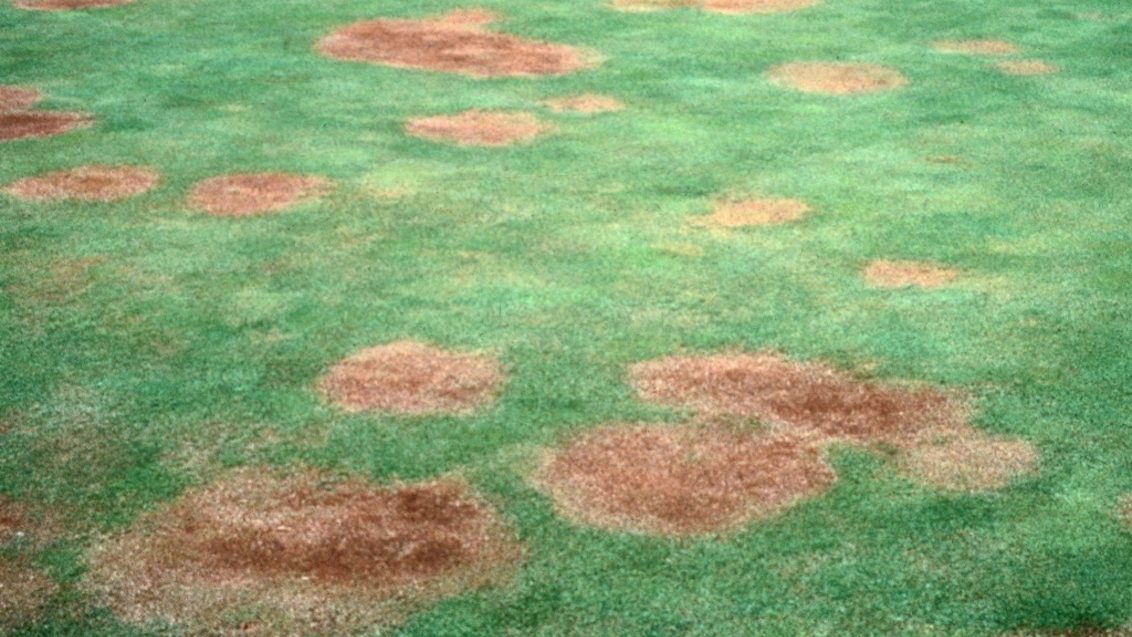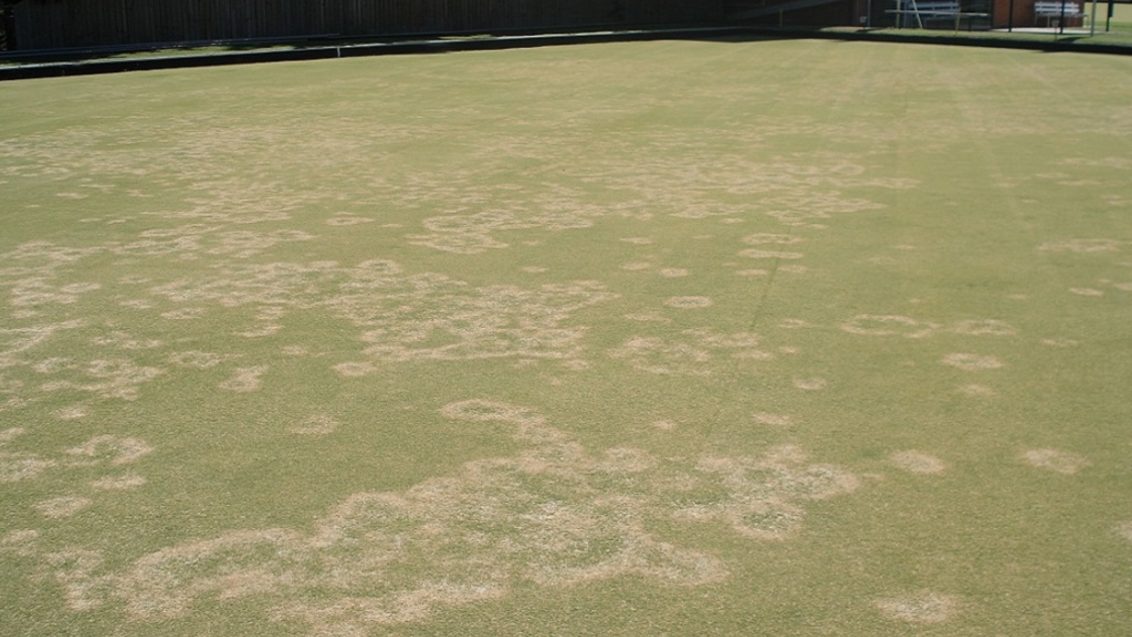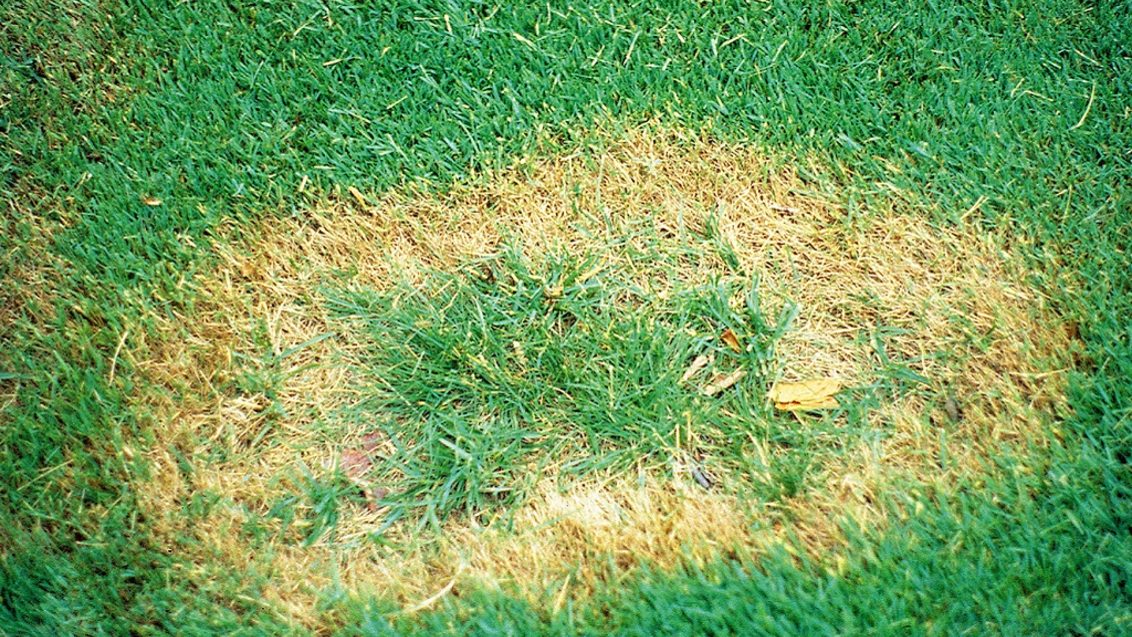Take-All Patch
Gaeumannomyces graminis var. avenae.
Disease of Roots
Susceptible Turf
Bent Grass
Symptoms
- Small, light brown dead patches appear on turf.
- Established patches continually spread.
- Stressed grass appears bronze to reddish brown and then fades to a dull brown.
- During winter affected patches turn grey.
- In pure Bent Grass stands, circular dead spots occur.
- Patches may enlarge (up to 15 cm a year) to reach diameter of 1 m or more or may appear briefly and then cease to spread.
- Affected patches do not usually heal rapidly and the centres are invaded/taken over by Fesuce and weeds.
- Stolons, rhizomes, roots and bases of shoots become dark brown to black before they are killed.
- Less severely infected tissues often bear dark strands of mycelium oriented primarily parallel to the root axis.
Conditions Favouring Disease
- Severe during cool, wet years and in poorly drained turf.
- Greatly enhanced on turf grown in soils with high pH.
- Increasing acidity tends to suppress this disease.
- Soil conditions favouring the disease include, light texture, low organic content, low or unbalance fertility, soil pH above 5.5.
Management Tips
- Use acidifying fertilisers.
- Apply moderate to high levels of phosphorous, potassium and minor elements where these nutrients are depleted from the soil.
- Improve drainage of turf.
- When liming apply the coarsest grades of lime to avoid rapid changes in pH.
- Removal of diseases patches and resodding where small areas are affected.
- Preventative systemic fungicide applications.
General Comments
Take-All Patch predominately affects newly sown Bent Grass golf greens. In mixed stands, the Bent Grass appears yellow-brown to brown, leaving a thinned overall stand dominated by Winter Grass or Fescue.



